Matador Network's Blog, page 633
July 6, 2021
These 7 properties from ‘The World’s Most Amazing Vacation Rentals’ are available on Airbnb

We hope you love the spaces and stays we recommend! Just so you know, Matador may collect a small commission from the links on this page if you decide to book a stay. Listed prices are accurate as of the time of publication.
The Netflix show World’s Most Amazing Vacation Rentals highlights collections of amazing and unique properties around the world, from lighthouses to treehouses to snake-like homes. Some are over-the-top for the everyday traveler, but many are places you can actually stay on during a trip. These seven properties, all featured on the show, are available for rent on Airbnb.
1. The Sitka Lighthouse — Sitka, Alaska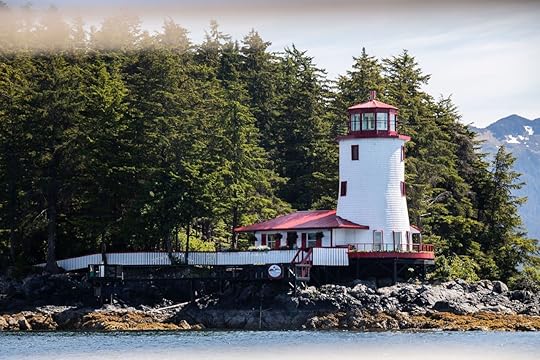
Photo: Airbnb
Alaska’s Sitka Lighthouse is a former working lighthouse overlooking Sitka Bay. Though currently retired from its marine navigation duties, the lighthouse has found a new purpose as the home for everything your crew could possibly want on a coastal Alaskan getaway. It has a full kitchen, two bathrooms, and sleeps up to six guests comfortably. There are bunk beds in one bedroom and an additional private bedroom, and before you even ask, the answer is yes — you can go up to the top of the lighthouse. Just don’t expect much response from passing vessels.
Six guests, two bedrooms
Price: $949 per night
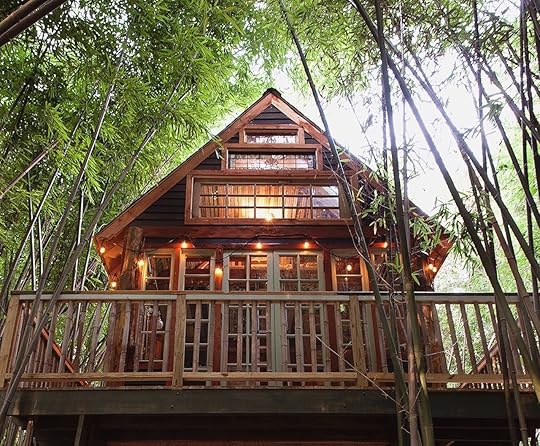
Photo: Airbnb
As surprising as it may sound, Atlanta has a bamboo forest that you can fully experience in this treehouse. You’ll even see rescued llamas and roosters roaming the property. This property is among Airbnb’s most wish-listed stays and in addition to being featured on The World’s Most Amazing Vacation Rentals, it was also seen on the show Love Is Blind.
Two guests, one bedroom
$395 per night
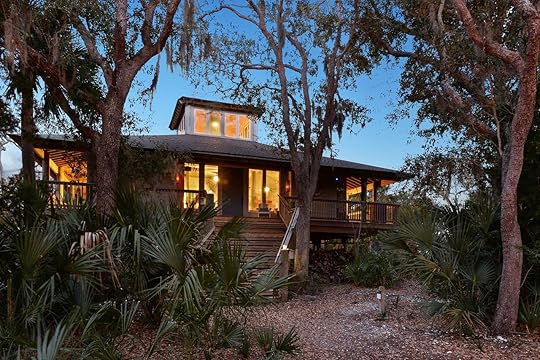
Photo: Airbnb
Who hasn’t dreamt of a private island? Just off Hilton Head Island, South Carolina, is this gorgeous stretch of tiny islands known as Old House Cay. They’re yours for the night through this listing, with access from Hilton Head courtesy of the owner’s private boat. Adding to the isolated allure of the private islands is the off-grid home you’ll stay in. Remember, this is The World’s Most Amazing Vacation Rentals — not Castaway.
Six guests, three bedrooms
Price: $395 per night
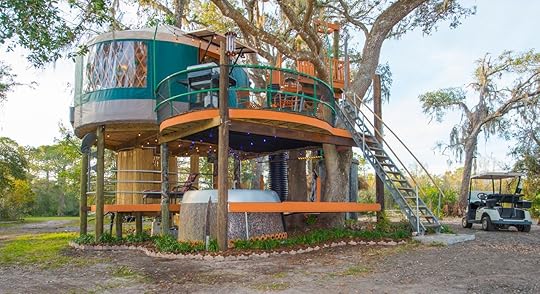
Photo: Airbnb
This Florida treehouse looks like what you’d find if you somehow stumbled into “The Jetsons meet The Flintstones.” The home has a tree trunk elevator, probably the only chance you’ll ever get to ride in one, leading to a 18-foot yurt on stilts with a functioning bathroom and accent lighting. No children or pets are allowed, so you can rest on your perch and sip a glass of wine free from distractions.
Two guests, one bedroom
Price: $230 per night
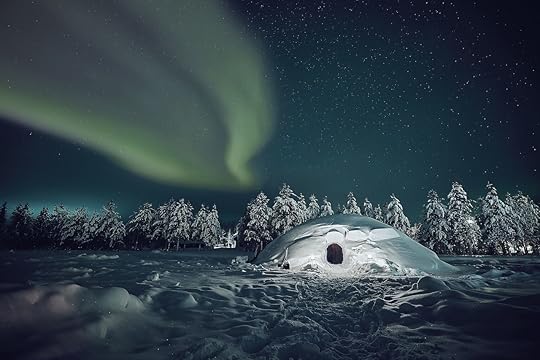
Photo: Airbnb
You’ve heard of ice hotels, but odds are that you’ve never slept in an actual igloo. This one, in Finland’s northern Lapland region, sleeps up to six — in actual, non-frozen beds — and comes with sleeping bags and lighting. Dress warm, bring a thermos of your favorite hot beverage, and prepare for an unforgettable night under the stars.
Six guests, one bedroom
Price: $131 per night
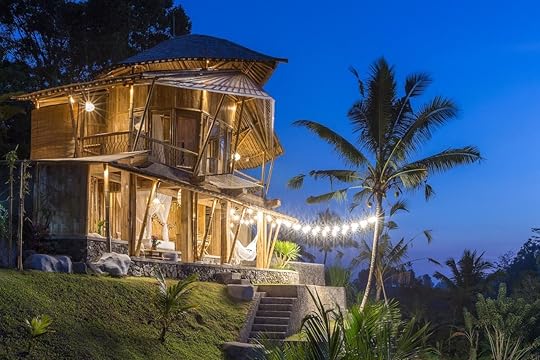
Photo: Airbnb
A bamboo house fits right in with the architecture of Bali, known by visitors for its peaceful retreats and meditative ambience. This bamboo paradise is surrounded by rice terraces far from the urban bustle of Denpasar, an ideal place to return to after hiking the amount Batur volcano or catching a morning surf.
Four guests, one bedroom
Price: $169 per night

Photo: Airbnb
This snake-shaped Airbnb property on the outskirts of Mexico City has gained much notoriety lately. You and nine guests can crash inside one of the most bizarre lodging properties on the planet, a luxurious estate that is the adult version of the crawling tubes at Chuck E. Cheese. The property is surrounded by botanical gardens, lakes, and a proclaimed cave of minerals, making the stay just as unique outdoors as it is inside.
Six guests, five bedrooms
Price: $318 per night
The post These 7 properties from ‘The World’s Most Amazing Vacation Rentals’ are available on Airbnb appeared first on Matador Network.
Your next big trip should be back in time to humanity’s first city
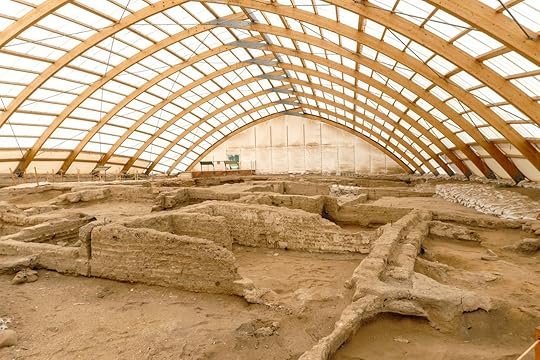
Urban travel often involves contemporary niceties like hip cafes or trendy boutiques. In such cities, the only way to look backward is to visit a museum or take a historical walking tour. But how about challenging yourself to think outside the confines of modern-day cities and planning a trip to the archaeological site of Çatalhöyük, in southern Turkey — to what is considered humanity’s first city. It won’t just make for cool photos. It’ll open your eyes to how our modern urban centers evolved. Here’s how to visit Çatalhöyük and what to expect.
What is Çatalhöyük?Çatalhöyük presents a vastly different historical experience than you’d find in Istanbul or Ankara. It’s located about 35 miles from the Turkish city of Konya in a region that has been inhabited by humans for over 9,000 years. In its heyday several millennia ago, Çatalhöyük was the world’s first established settlement, bridging the gap between the nomadic hunter-gatherer lifestyle and the more settled way of life brought forth by the evolution of agriculture.
First settled in 6250 BCE and inhabited by nearly 8,000 people, Çatalhöyük essentially was the world’s first prototype of a city. If you consider yourself to be any type of urbanist, historian, or simply someone who appreciates the incredible ability of humankind to adapt and seek progress, the remains of Çatalhöyük are a must-see.
Today Çatalhöyük is an archaeological site, brimming with diggers and researchers. According to the official archaeological records of the settlement, the ruins were first discovered by British archaeologists David French, Alan Hall, and James Mellaart in 1958. The first excavation began three years later in 1961, with various teams leading digs over the ensuing half-century.
Much of Çatalhöyük and other ancient settlements nearby are unrecognizable today, worn away by time. Sedimentation has buried much of the remains several feet under the surface. But what has been preserved can be viewed in its post-excavation state, with a brochure available at the visitors’ center to guide you through the site.
How Çatalhöyük paved the way for today’s cities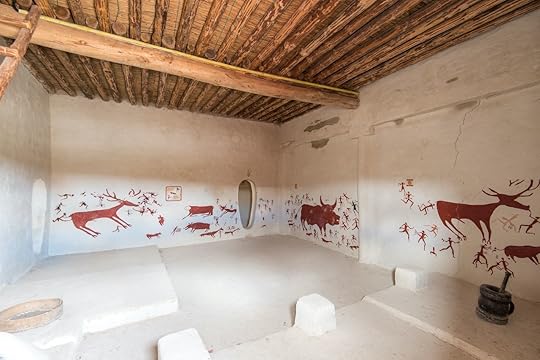
Photo: Uysal Levent/Shutterstock
Çatalhöyük contained much of what we still have in cities today, such as houses, common areas, and waste disposal spots. The main thing missing was roads. The houses of Çatalhöyük, each about 80 square feet, were built directly adjacent to one another, separated by walls made primarily of mud. Each had a mudbrick flat roof with a smoke hole, which also served as the entrance and exit for residents who climbed up and down on a ladder. Scientists believe that the city was the center of many religious festivities, as evidenced by wall paintings depicting ritualistic practices. These images include images of people portrayed as bears and other “tough” animals out on the hunt.
Within the settlement, you can visit three sections. The first is an archaeologist-built model of a typical home in Çatalhöyük. You can see the mudbrick walls used to form the exterior of each home, along with recreations of where residents likely slept, cooked, and performed family tasks. Adjacent to the home is a museum containing finds from the various excavations. Here you’ll also find historical information that puts what you’re looking at into context.
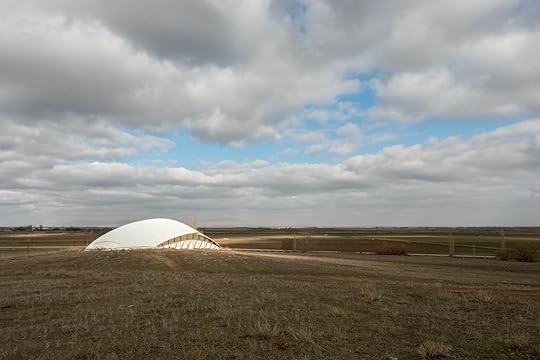
Photo: Uysal Levent/Shutterstock
Finally, you’ll make your way to an actual excavation site protected by an unenclosed dome roof. This “settlement mound,” as it’s known, is called the North Shelter and is the most well-preserved ruin at Çatalhöyük. You can see the remains of original housing in its single-layer block formation. The South Shelter, a short walk from the North Shelter, is where archaeologists uncovered handicraft works that now sit in museums here and in Turkey’s capital of Ankara. All visits to the ruins themselves, as well as to the replica home, are led by a guide.
How to visit Çatalhöyük
Photo: NiglayNik/Shutterstock
Getting to Çatalhöyük takes about an hour from Konya by car via highway 715. If you don’t have a car, you can travel via taxi from Konya for about $36 round trip, including an hour’s wait time while you tour the site. If you travel by taxi or personal car, allow three to four hours round trip, including transit and time to experience the site. You can also travel by bus from Konya’s Eski Garaj minibus station to Cumra, and take a taxi the rest of the way, to save about $10. If you don’t make it down to Çatalhöyük, or want more context on what you’re seeing, some archaeological finds have been moved to the Museum of Anatolian Civilizations in Ankara. 
The post Your next big trip should be back in time to humanity’s first city appeared first on Matador Network.
5 culinary experiences in Vermont
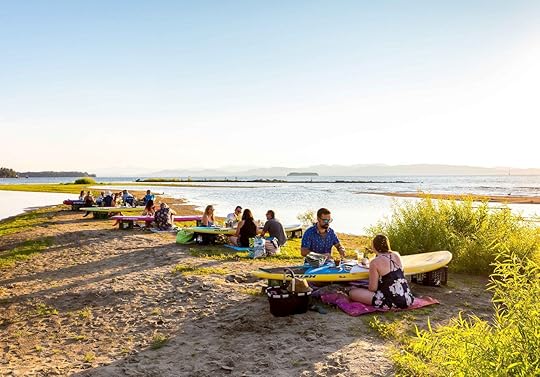
From White Christmas to New Girl, pop culture has been enchanted by the Vermont getaway for decades. The state has become synonymous with the “country escape,” what with its gorgeous fall foliage, picturesque small towns, and cozy farmhouses and inns.
But pop culture tends to leave out what you can’t experience through a screen: Vermont’s rich soil, agricultural know-how, and the fierce loyalty of Vermonters to all things local combine to make the state a unique destination for food lovers. As visionary chef and food activist Alice Waters said, “When you have the best and tastiest ingredients, you can cook very simply and the food will be extraordinary because it tastes like what it is.”
Vermont food is indeed extraordinary, and there are some culinary experiences that you really can only have in Vermont. Here are a few of our favorites.
Experience #1: A farm stay and cheesemaking workshop at Fat Sheep Farm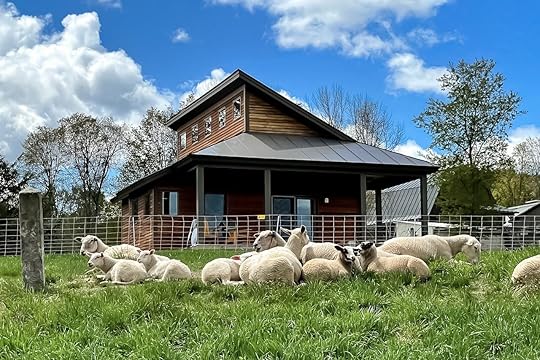
Photo: Fat Sheep Farm & Cabins
Where: Hartland, Vermont
Todd and Suzy of Fat Sheep Farm had their meet-cute online, specifically on Match.com. Suzy was an elementary school teacher and former zookeeper who dreamt of living on a farm; Todd was a former lawyer working on various Vermont farms to try to learn the ropes. Todd wooed Suzy with fresh produce, and she wooed him right back by turning said produce into lovely meals.
Several years later, Fat Sheep Farm & Cabins was born, offering farm stays and incredible dining and culinary experiences. Play with the farm animals, help with farm chores (if you’d like), shop the farm stand, go for walks in the forest, and even take a workshop on cheesemaking or sourdough bread-baking. We can’t all buy a farm in Vermont, but you can pretend that you did when you’re at Fat Sheep.
Note: Cheesemaking workshops are set to resume in late 2021.
Experience #2: Goodrich’s Maple Farm sugarhouse tour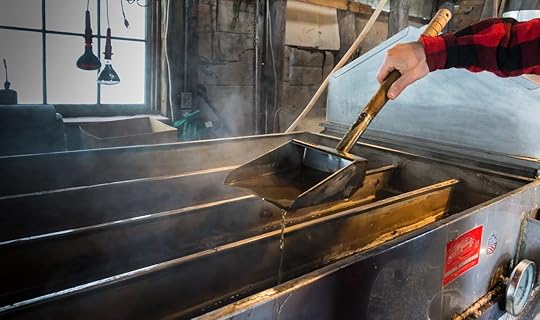
Photo: vermontalm/Shutterstock
Where: Cabot, Vermont
There are few things more quintessentially Vermont than real maple syrup. Goodrich’s Maple Farm, a sugarhouse in Cabot, offers free tours that showcase the full process, from maple tree to maple syrup. It’s a doozy: It takes 40 gallons of sap to make one gallon of the good stuff. And in Vermont, it’s the best stuff.
You’ll learn the history of sugaring at Goodrich’s, see one of the world’s largest maple sap evaporators, and taste your way through their lineup of maple products. After the tour, you can head over to the Cabot Farmers’ Village Store or local restaurants, just minutes away in town. After all, eating is part of the learning experience, too.
Experience #3: Farm to Ballet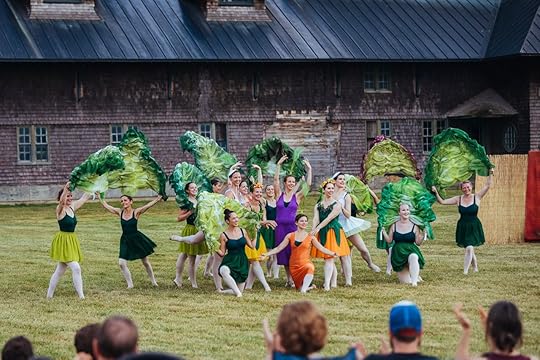
Photo: Brandon Parrish/Ballet Vermont
Where: Several locations
Farm to Ballet is a project of Ballet Vermont created by veteran ballet dancer and native Vermonter Chatch Pregger. Farm to Ballet, the website explains, “explores the relationship between farmers and land, natural food cycles, and the human role in ecosystems.” Classic ballets, such as Swan Lake, are reimagined to tell the story of farm life with characters like kohlrabi, cows, and bees.
The ballet is performed at farms around the state and ticket sales are shared with the farms in order to support Vermont’s rural communities. And of course, while you’re there, you’ll have the opportunity to pick up a bit of whatever the farm specializes in, from fresh peaches to alpaca wool.
Experience #4: Philo Ridge farm dinners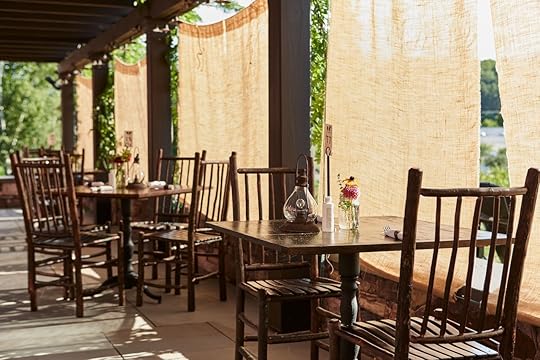
Photo: Philo Ridge Farm
Where: Charlotte, Vermont
Philo Ridge Farm is a 400-acre regenerative agriculture farm in the tiny town of Charlotte, a half hour south of Burlington. Quick explainer: Regenerative agriculture is an old style of farming that utilizes a specific ecosystem of plants and animals to draw carbon back into the soil and make it more fertile.
Along with raising heritage livestock breeds, which graze on lush pasture, Philo Ridge grows certified organic fruits, vegetables, and flowers. Some of that is sold at their onsite market, and some is used for their famed farm dinners. Past dishes have included heritage chicken-leg roulade with mushrooms and Hakurei turnips, red Burgundy lettuce salad, beef carpaccio with ramp aioli, and homemade buttermilk ice cream. Exceptional raw ingredients meet serious back-of-house finesse here for a meal you may never forget.
Experience #5: Adventure Dinner
Photo: Bob Handelman/Adventure Dinner
Where: Several locations
Adventure Dinner founder Sas Stewart has been known around Vermont’s food and beverage scene for years. When she closed her Burlington bar Highball Social and sold her distillery Stonecutter Spirits, the community was ready and waiting for her next project.
Adventure Dinner, which has been written up in publications like Food & Wine, “showcase[s] Vermont chefs, makers and producers to paint a dynamic picture of what it is like to live in the Green Mountain State.” And, as the name promises, each dinner is an adventure. You may be dining in an orchard, on a boat, or in a forest, with notice of the location only coming 24 hours before mealtime. Menus for each multi-course feast are planned around seasonal produce and cocktails crafted by Stewart herself. Events are, as the website perkily puts it, “rain or shine, and a ton of fun either way.” Which could pretty much be the motto of any culinary experience you seek out in Vermont. 
The post 5 culinary experiences you can only have in Vermont appeared first on Matador Network.
July 2, 2021
The US may soon force airlines to refund passengers for delayed bags

Travelers who have been burned by baggage claim might soon get the retribution they’ve been longing for. A new proposal from the Department of Transportation (DOT) would require airlines to refund fees on checked bags if those bags aren’t delivered to passengers in a timely fashion, the Associated Press reported. It would also require refunds for fees on other extras, like Wi-Fi access, if the airline doesn’t provide the service during the flight.
The current rules only require refunds if bags are lost, even though airlines are supposed to compensate passengers for reasonable incidental expenses incurred during baggage delays. The new proposal would require airlines to issue refunds for baggage delays of more than 12 hours from the time a passenger’s domestic flight touches down, or within 25 hours of an international flight arrival.
The goal of the new rules is to increase competition between airlines and shift power into the hands of passengers. Last year over 100,000 consumers complained to the government about airline service, with many specifically alleging airlines refused to provide refunds where appropriate.
The DOT will issue the new proposal in the next few days, though it won’t go into effect until at least next summer. 
The post The US may soon force airlines to refund passengers for delayed bags appeared first on Matador Network.
Watch: England’s youngest Olympian ever has a chance to win skateboarding gold

Sky Brown is about to make history. The skateboarder will be the youngest Olympian ever to represent Great Britain at a Summer Games, which begins in Tokyo on July 23.
The 12-year-old — who’s on Instagram, TikTok, and YouTube — qualified through world rankings last month and will compete in the women’s park event.
During the event, Brown will be 11 days past her thirteenth birthday. That beats out Margery Hinton, who was 13 years and 44 days old when she swam for Great Britain at the Amsterdam Olympics nearly a century ago.
@thebrownfamilyAlways want to go bigger 💨😊❤️ ##skate ##skateboardring ##sky ##skybrown ##bigger
♬ Kiss Me More (feat. SZA) – Doja Cat
Brown will also make history by competing in skateboarding’s debut as a Summer Olympic sport. It’s one of five sports that have been added to the Summer Games.
Brown may even set a record by winning. The daughter of a British father and Japanese mother who often trains in the US, she’s already won silver and bronze medals at previous world skateboarding championships. Her chances of taking home a medal are high, and Brown could even win gold.
One of Brown’s fellow athletes on Great Britain’s skateboarding team is also a teenager. British national champion skater Bombette Martin will be 14 at the Olympics. Brown and Martin have already inspired more girls to take up a sport that has, until recently, seemed very male-dominated, The Guardian reported.
While Brown will be the youngest Briton to compete in the Olympics, other countries are planning to send young athletes to the games, among them Syrian table tennis superstar Hend Zaza, who’s 11.
Many young Olympians have come before them, including 13- and 14-year-old swimmers and divers from Nepal, the US, and Japan. And while gymnast Nadia Komanici stunned the world by earning the first perfect score at the 1976 Montreal Games at the age of 14, gymnast Dimitrios Loundras competed in the first modern Olympics ever, held in his home country of Greece in 1896. He was 10. 
The post Watch: England’s youngest Olympian ever has a chance to win skateboarding gold appeared first on Matador Network.
This downtown Boston hotel is offering super cheap rates through Travelzoo all summer

We hope you love the spaces and stays we recommend! Just so you know, Matador may collect a small commission from the links on this page if you decide to book a stay. Listed prices are accurate as of the time of publication.
Hotels in trendy areas of major city centers are famously expensive. Boston is no exception — in most cases, at least. This Boston Travelzoo deal puts you at the Kimpton Onyx Hotel in Boston’s West End, just outside downtown, for $125-$145 per night Sunday through Thursday, and even keeps the price under the $200 mark starting at $159 on weekends through November. The voucher also waives the resort fee, lands you free Wi-Fi, and even allows dogs to come along without an extra charge.

Photo: Kimpton Onyx Hotel/Facebook
With this Travelzoo deal, you’ll be within walking distance of the Paul Revere House, Faneuil Hall, as well as everything in Beacon Hill and the city’s North End. Stroll the harbor, have lunch at Lederman Park, and when game time comes, Fenway Park is a quick Uber ride down Beacon Street. Or if you’d rather exercise, the hotel offers free bike rental which you can use to cruise a few minutes away to Little Italy. We encourage you, however, to take some time to enjoy the hotel itself. The hour-star hotel has yoga mats in each room, a 24/7 gym, and offers in-room spa services.
You’d be hard-pressed to find a better location and won’t find a better price on a Boston hotel for this summer. Book now though because this deal will sell out. It’s fully refundable if your plans change — that’s how wicked smaht it is.
Why this deal is unique:
Unheard of rates from $125 on weeknights and $159 on weekendsWalking distance to historical sites and dining on Cambridge StreetEasy access to downtown and the harbor, with Fenway Park not far in the other directionWaived resort fee, complimentary Wi-Fi, and free stays for petsTake a scavenger hunt sightseeing tour of Boston for $29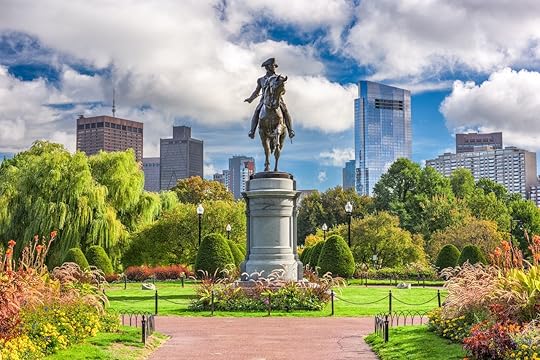
Photo: Sean Pavone/Shutterstock
When to tour: Daily through March 2022
Fully refundable: Yes
What better way to experience a city than to spend an afternoon digging up its history? This tour covers two miles of historical sights and landmarks and provides a great opportunity not only to learn about the rich history of New England’s vibrant hub, but to have fun and get some exercise while doing it. You’ll save more than 35 percent on the Freedom Trail Tour with this Boston Travelzoo deal.
Take your partner out for a nice Boston dinner for only $55, wine included
Photo: Pazza on Porter/Facebook
When to dine: Before July 31
Fully refundable: Yes
Of course, you need to eat after all that sightseeing. This Boston Travelzoo deal secures you a high-end dinner for two at Pazza on Porter, where you’ll dine Italian style and enjoy a bottle of red or white wine included with the price. This deal is 50 percent off what it normally costs to dine out at Pazza, and includes an appetizer and dessert. The vouchers expire July 31 and will undoubtedly sell out, so grab yours and make a reservation. 
The post This downtown Boston hotel is offering super cheap rates through Travelzoo all summer appeared first on Matador Network.
12 ways that french fries are made around the world

Americans get fries with everything — burgers, fried fish, sandwiches, and hey, maybe even salads. Sometimes we put fries in our burgers for extra efficiency and texture. There’s truly no limit to how to eat french fries in the US. But what about other countries? Not everyone eats fries the way we do. Expedia created a video illustrating how different countries around the world consume french fries, and while you might not be changing your fry habits anytime soon, a little creative inspiration can’t hurt.
French fries are Canada’s unofficial national dish, forming the backbone of the ever-popular poutine — french fries with cheese curds and gravy. It might not be your favorite, but you have to admit that the elevation of a side dish to a national cuisine is pretty impressive.
Among other lesser-known fry concotions are Spain’s patatas bravas, which consists of thicker potato chunks covered in a spiced tomato sauce. The UK also prefers thicker fries (or “chips”) but with curry sauce, and Peru throws sliced sausage into its fries to really kick its salchipapas up a notch. Similarly, Germany’s bratkartoffeln rely on onions and bacon to flesh out their flavor.
Regardless of our personal or political differences, or where we live in the world, there’s one thing we can all agree on without controversy: Fries are awesome. 
The post 12 ways that french fries are made around the world appeared first on Matador Network.
US citizens can self-select gender on passport without medical certification
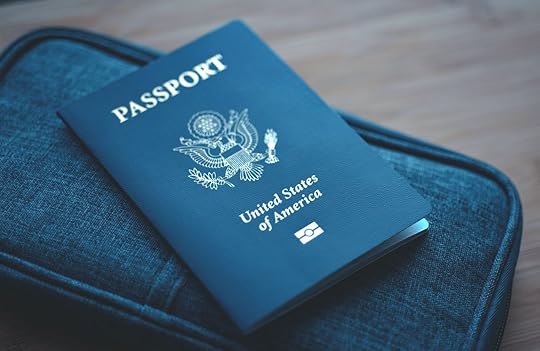
On the last day of Pride month, June 30, the State Department announced that US passport applicants will have the ability to self-select their gender marker as “F” or “M” without the need for medical certification. The option to select the gender marker “X” for non-binary, intersex, and gender non-conforming people is currently in the works.
The National Center for Transgender Equality has called the change a “a common-sense way to improve the lives of transgender people.” Rodrigo Heng-Lehtinen, a transgender policy, advocacy, and messaging expert explained that “having accurate passports and consistent ID is critical to daily life. It’s necessary for travel, banking, starting a new job and school. Inaccurate IDs open transgender people up to harassment and discrimination.”
Until now, US citizens who wanted to select a different gender than the one they were given at birth needed to present certification from medical professionals that they were going or had gone through a full medical gender transition.
The option to select the gender marker “X” has been promised, but the State Department remarked, “The process of adding a gender marker for non-binary, intersex, and gender non-conforming persons to these documents is technologically complex and will take time for extensive systems updates.” 
The post US citizens can self-select gender on passport without medical certification appeared first on Matador Network.
This year, skip the crowds and plan your trips around second cities

“I just returned from Hamburg” doesn’t have quite the same ring to it as, “I just returned from Berlin.” Yet travel isn’t about what sounds best, it’s about having the most impactful and memorable experience.
Conventional wisdom might suggest that the best experiences are found in the cities that live in the limelight — the Bangkoks, Lisbons, and New Yorks of the world — but in many cases you can have a more memorable vacation by avoiding a country’s most populous, headline city and instead visiting its second city. The second city moniker refers to population, but that doesn’t necessarily mean its cultural, culinary, or leisure offerings are second best. Second cities are typically less crowded, more affordable, and allow travelers to escape the tourist traps that plague their better-known counterparts.
Fewer touristsNo group of people is more self-loathing than tourists. You never hear doctors say, “Ugh, I wish there were fewer doctors in this hospital,” yet a disdainful “That museum is packed with annoying tourists” is a constant refrain from frequent travelers. Irony aside, this attitude is justified. Tourists don’t want to feel like tourists. Even the guy with the Hawaiian shirt, sun visor, and camera around his neck wants to feel like he’s having a one-of-a-kind experience. But nothing shatters that illusion like sharing the streets with thousands of other tourists in Hawaiian shirts and sun visors.
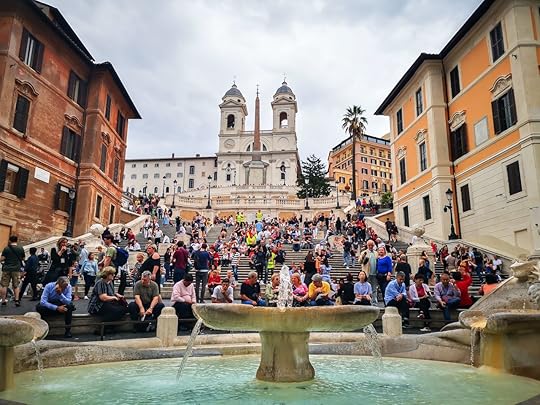
Photo: Guiderom/Shutterstock
The most immediately obvious benefit of second cities is that there are fewer tourists. That means fewer people crowding into trendy restaurants, brushing past you on the street, and waiting in line for the same attractions. No one is calling the Colosseum a waste of time, but waiting in line for an hour only to be shuffled around with a group of 80 other people can somewhat detract from the grandeur of the experience. In Milan — Italy’s second city — you can visit the 14th-century Piazza del Duomo cathedral, the palatial Grand Gallery shopping area, and the 15th century Castello Sforzesco relatively hassle-free in probably the same time it would take you to get into the Colosseum. Second cities aren’t crowd-free, of course, but those crowds are smaller and not as concentrated around one or two headline attractions.
Affordability and availabilityFinding an inexpensive city is as tough as finding a brewery that serves Bud Light. The more a city is known, the more demand exists for its attractions, restaurants, and accommodations, meaning prices inevitably climb. Second cities might not exactly be budget destinations, but they can certainly be easier on the wallet.
It’s not a secret that location has as big, if not greater, impact on price as the actual food quality. Proximity to in-demand attractions, or a coveted location on a highly-trafficked, tourism-focused pedestrian thoroughfare, could easily make your meal a lot more costly than the exact same meal in a slower-paced city. You won’t save hundreds of dollars by dining in a second city, but every meal adds up.
The same principle applies to accommodation. The bigger a city’s hype, the greater demand for its hotels and Airbnbs, thus resulting in higher prices. This is especially true in the summer, when lots of tourists are eyeing the same headline cities, the same popular attractions, and, by extension, vying for the same accommodations. The average price per apartment square footage in Prague is $606, compared to just $389 in the Czech Republic’s second city of Brno. When Airbnb owners in each city calculate how much to charge, which is more likely to be affordable?
Travel more independentlyOne of the main draws of headline cities like Prague, London, Cairo, and Buenos Aires is that planning your trip is relatively easy. As well-established tourist destinations, multitudes of digital and physical guidebooks exist that map out complete itineraries and expose every supposedly “hidden gem.” Second cities are the road less taken. Everyone has a friend who’s been to London, but chances are even your most well-traveled friends haven’t been to Birmingham. Information about these cities doesn’t flood the internet quite like their larger neighbors, and you might not be able to lean on your friends for travel advice. But that’s a good thing.
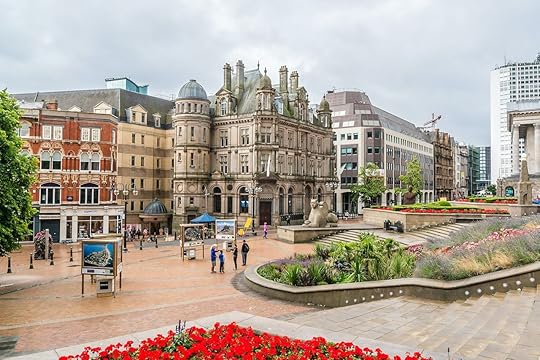
Photo: Kiev.Victor/Shutterstock
Headline cities are like well-trod hiking paths overworn by the countless trekkers passing through every day. The scenery is still beautiful, but you’re not going to see anything a thousand other hikers haven’t already seen. Second cities are more like backcountry trails. They might be tougher to plan for and you won’t quite know what to expect, but you’ll have a sense of exploration and adventure you wouldn’t get on the main trail. Wandering the Old Port of Marseille feels like you’re charting your own path, while visiting the Eiffel Tower feels more like walking in someone else’s footsteps.
Do your part against overtourismIt’s not only fellow travelers who harbor bitterness toward tourists. In many of the world’s most popular cities, governments and local residents have suffered from overtourism and some have taken steps to curb it. In Venice, cruise ships have been decried as eyesores as an unsustainable number of passengers are offloaded and put serious strain on the city’s infrastructure. In Amsterdam, tourism has overwhelmed the city so dramatically that a tourist ban is being considered for its coffee shops, and plans are in the works to move the famous Red Light District away from the city center. The city also recently cracked down on Airbnbs after residents complained that the proliferation of short-term rentals was adversely affecting the character of their neighborhoods. No one is arguing that tourism should cease altogether, but it could be channeled more responsibly. Namely, by spreading the love.

Photo: Alfio Finocchiaro/Shutterstock
If just a small fraction of Amsterdam’s tourism was redirected to Rotterdam, its woes might be alleviated. If you’re torn between a headline city and its slightly lesser-known, less frequently visited alternative, keep in mind that the second city would likely be buoyed by tourism in a positive way, while the headline city might actually be suffering from it.
Wherever you go, whether it’s a headline city, second city, third city, or hell, even a seventh city, make sure you’re practicing responsible tourism. 
The post This year, skip the crowds and plan your trips around second cities appeared first on Matador Network.
7 stunning US train rides that are worth splurging on

When you think of grand vintage train rides, you probably think of something along the lines of a luxurious train route outside of the US that makes stops at a number of ornate and beautiful train stations. That’s understandable, as many parts of the world have a much stronger rail tradition than in the US. While there’s some catching up to do when it comes to train efficiency and accessibility, you don’t have to go all the way to Europe for luxury. From traversing the wilds of Alaska aboard the Denali Star to exploring the rugged West on the Colorado & Southern Railroad, there’s no shortage of epic train journeys in the US that are listed on the train tour company Vacations by Rail. They might not be cheap, but these US train trips are worth the splurge.
1. Alaska the Greatland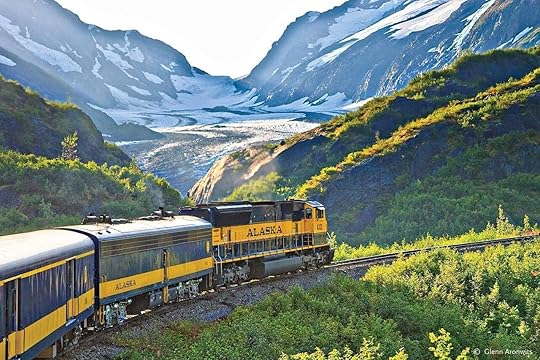
Photo: Alaska Railroad/Facebook
The nine-day Alaska the Greatland tour aboard the Denali Star and Glacier Discovery is one of the most far-flung US train trips you can take. It brings you from Fairbanks to the heart of Denali National Park, then back down through Kenai Fjords National Park. Along the way you’ll see wildlife in Denali, experience small town life in Talkeetna, visit the Chena Indian Village, and even go dogsledding. There’s also a glacier cruise through some of the state’s most dramatic scenery, and a riverboat tour along the Chena and Tanana rivers. The Denali Star is undoubtedly the highlight of the trip, taking visitors along the historic Alaska Railroad through rugged forests and mountain ranges. That includes views of Mt. Denali — the tallest mountain in North America.
Price: $3,995/person
2. America’s Great National ParksNational parks are usually synonymous with road trips, but you don’t necessarily have to load up a car to visit some of the country’s most beautiful national parks. The 14-day America’s Great National Parks train journey brings you through five national parks, including Glacier National Park, Yellowstone National Park, Arches National Park, Canyonlands National Park, and Grand Teton National Park. You’ll travel by Amtrak deluxe motorcoach, with private sleeping accommodations available with an upgrade. Along the way, you’ll experience the famed Going-to-the-Sun Road across the Continental Divide; see bison, moose, and elk in Grand Teton National Park; and take in the mesas and buttes along the Colorado River.
Price: $4,620 per person
3. Autumn in New England
Photo: Conway Scenic Railroad/Facebook
This eight-day journey through New England is one of the most classic US train trips you’ll find anywhere in the country. And it’s certainly better than any self-constructed leaf-peeping itinerary you might try to cobble together yourself. Starting in Boston, the trip first brings guests to North Conway, where they’ll travel along the Conway Scenic Railroad. The Cog Railway on Mt. Washington is up next, followed by Amtrak’s Vermonter train from Burlington to Brattleboro. Every leg of the trip will introduce guests to some of the most striking leafy hues they’ve ever seen. Lest you get bored of leaves, the journey also features Boston’s historic Freedom Trail, a trip to Mystic Seaport in Connecticut, and a look inside a lofty mansion in Newport, Rhode Island.
Price: $2,495 per person
4. California Redwoods and WineriesCalifornia is known for its towering redwood trees and its wineries, and this train journey allows you to see both in the same trip. At eight days total, the trip takes place on three separate railways. First, you’ll hop aboard the Roaring Camp Railroad’s Redwood Forest Steam Train to immerse yourself in California’s famous redwood forests. Then you’ll head to Yosemite National Park and take in the dramatic scenery aboard the Yosemite Mountain Sugar Pine Railroad. The final leg of the trip is likely the part you’ve been most looking forward to. The Napa Valley Wine Train will take you through the vineyards of Napa, Sonoma, and Healdsburg, and herein lies the true beauty of train travel: you don’t have to find a designated driver.
Price: $3,495 per person
5. Smoky Mountain Rail Adventure
Photo: Great Smoky Mountains Railroad/Facebook
A nine-day adventure through the Great Smoky Mountains means traveling through some of the most historic, soulful, and vibrant cities in Tennessee and North Carolina, as well as exploring the mountainous landscape. You’ll start in Nashville before moving on to Chattanooga, Pigeon Forge, and then into the wilderness aboard several steam trains. Train rides include the Tennessee Valley Railroad’s Summerville Steam Special, the Incline Railway to Lookout Mountain, and Great Smoky Mountains Railroad’s Tuckasegee Steam Train. These trains will take you on a journey along the Tuckasegee River and through Great Smoky Mountain National Park, before arriving in Asheville, North Carolina to end your trip. In Asheville, you’ll have the opportunity to visit the historic Biltmore Estate and explore the city’s art galleries, and distinctive Beaux Arts, Neoclassical, and Gothic architecture.
Price: $2,795 per person
6. Grand Canyon and the SouthwestThe Grand Canyon is often at the top of travelers’ must-see lists, but it’s not typically associated with rail travel. This 10-day train trip brings you through Grand Canyon National Park aboard the vintage railcars of the Grand Canyon Railway. Beginning in Chicago, you’ll board the Southwest Chief train to Flagstaff, Arizona, before staying two nights at the Grand Canyon’s South Rim. Then you’ll head to Lake Powell for a boat cruise, Antelope Canyon to see its colorful walls, and take a jet boat ride along the Colorado River for a view of Utah’s red rock cliffs. You’ll see five national parks in total: Grand Canyon, Zion, Bryce Canyon, Capitol Reef, and Arches. Your journey will conclude in Grand Junction, Colorado, and by the end, you’ll feel like you’ve thoroughly explored the Southwest’s most stunning geographical features.
Price: $3,395 per person
7. The Colorado Rail Experience
Photo: Durango & Silverton Narrow Gauge Railroad/Facebook
Setting out to explore the American West is a long-held tradition, but these days you don’t have to settle for a covered wagon — or even a clunky car — to do it. The Colorado Rail Experience is an eight-day expedition through the Rocky Mountains aboard six (that’s right, six), railways: the Georgetown Loop Railroad, the Leadville, Colorado & Southern Railroad, the Durango & Silverton Narrow Gauge Railroad, the Cumbres & Toltec Scenic Railroad, the Royal Gorge Route Railroad, and the Manitou and Pikes Peak Railway. As you plunge deep into the Old West, you’ll hear from experts onboard about the state’s mining and railway history. The trip, which leaves from Denver, also includes a visit to the Garden of the Gods, Breckenridge, and historic downtown Durango. 
Price: $2,695 per person
More like thisArt + Architecture7 beautiful train stations in the US that are true architectural marvelsThe post 7 stunning US train rides that are worth splurging on appeared first on Matador Network.
Matador Network's Blog
- Matador Network's profile
- 6 followers



